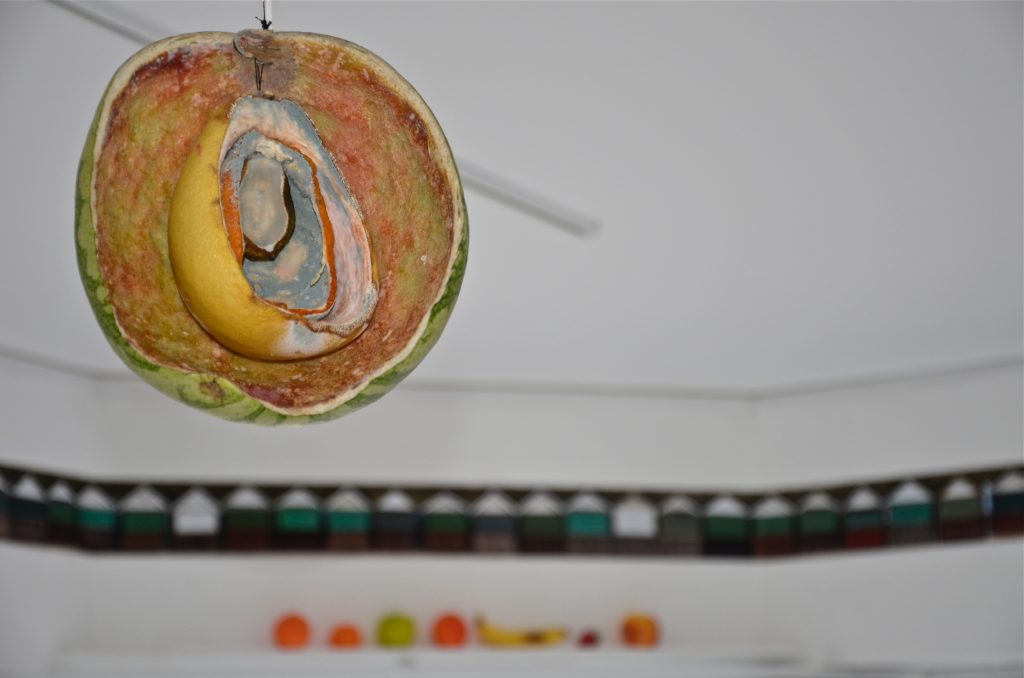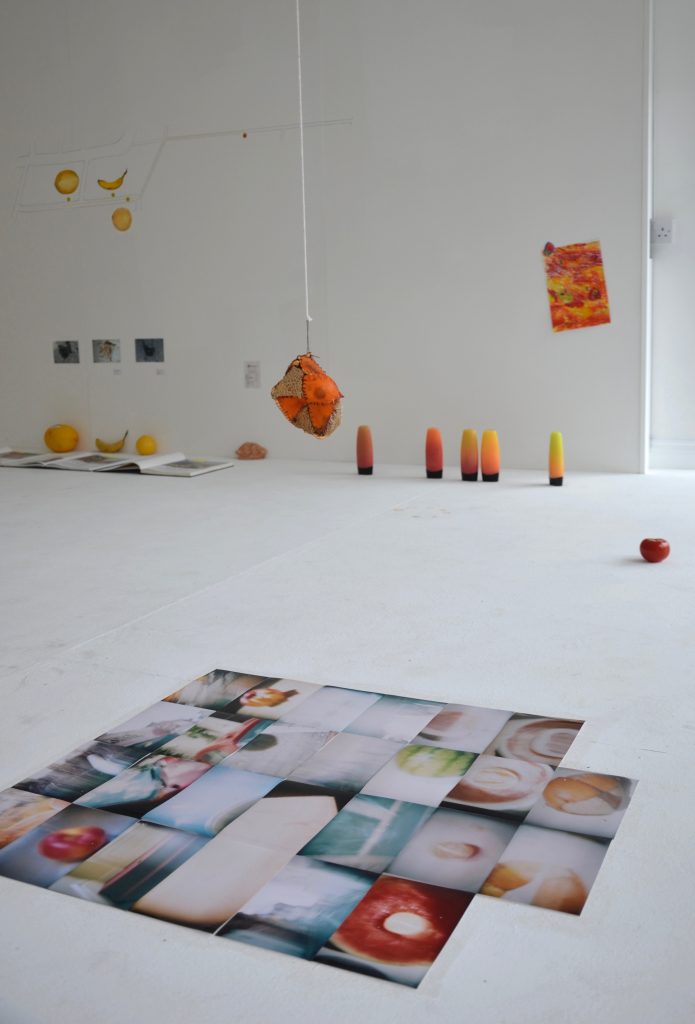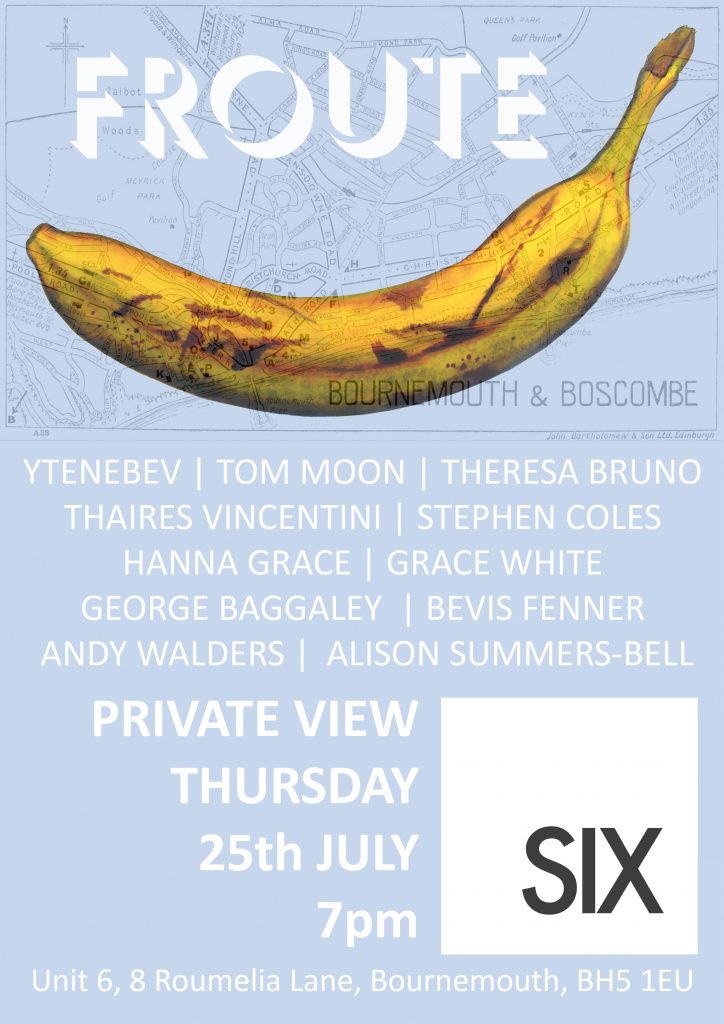


FROUTE is an artist-led psychogeography project that I instigated in order to explore the relationship between arbitrary objects and geographic spaces.
The project took place at SIX project space and the surrounding area, over a six day period, from the 19th – 24th July 2013. The starting point for the project was the mundane subject matter of ‘fruit’ and the desire to explore the relationship between objects, drawing and creative engagement with local geographic spaces.
At first glance there appears to be little or no relationship between fruit and geography, however the notion of gathering ‘fruit’ becomes an invitation to play. Indeed, this desire to find objects to play with links back to childhood. Children do not use objects purely as commoditised anchors for identity but instead imbue them of a totemic significance; fetishizing them and inviting them into their psycho-spatial worlds.
David Crouch (1998) references a project by the conceptual artist Stephen Willats (1982), to illustrate the potency of objects as symbols of belonging in space. Willats interviewed children from a northwest London tower block who used a piece of wasteland to play on and what he discovered about their activities informs our understanding of the way children use objects to help them dwell in spaces:
They take old prams, a stool, clothes, fragments of identity from ‘home’ that can be used to imprint identity in a place they feel is their own; making their own memories. They leave these artefacts at the site, to return to later, to build and inform their practice and meaning (Crouch, 1998: 168).
This notion of objects as the linchpins of ‘dwelling’ then becomes the starting point of a project which uses play, involving objects as a means of occupying the urban spaces of Boscombe to help foster ‘sense of ownership’. Each artist began the project by entering the project space and picking out a coloured smiley face at random from the ‘colourbox’. The colour chosen then influenced the nature of ‘fruit’ sought in and around the Boscombe area. Artists were free to interpret the concept as literally or as freely as they liked and used the ideas of journeying to gather ‘fruit’ as a means of accumulating objects and engaging with and documenting their interactions with spaces. The project culminated in the artists interacting with each other’s contributions to produce an evolving installation.
Bevis Fenner
